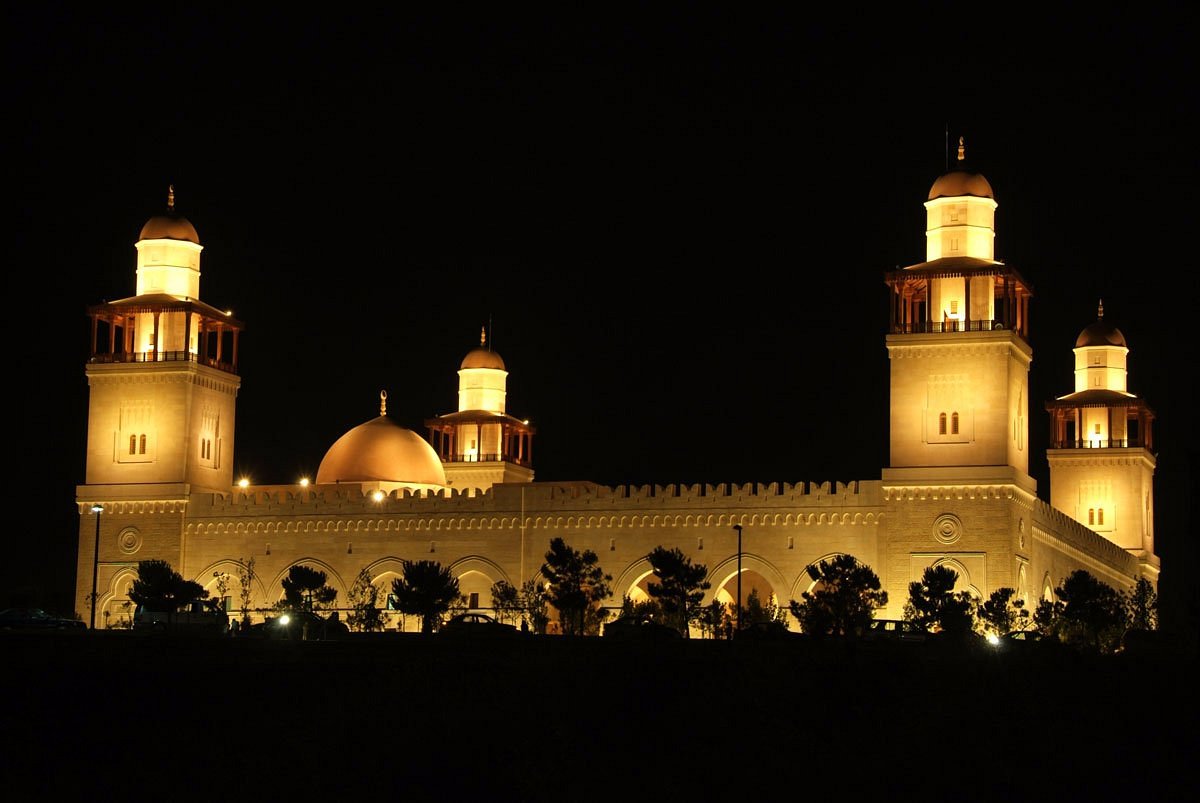The King Hussein Mosque, located in the heart of downtown Amman, Jordan, stands as a grand testament to the country’s rich religious heritage and architectural excellence. This magnificent mosque, named in honor of the late King Hussein bin Talal, serves as a significant place of worship and a cultural landmark that attracts visitors from around the world.
Architecture and Design: The King Hussein Mosque showcases exquisite Islamic architecture with a blend of traditional and contemporary elements. The design reflects a harmonious fusion of Jordanian and Islamic influences, creating a striking visual presence. The mosque’s exterior features intricate geometric patterns, ornate calligraphy, and intricate detailing, showcasing the craftsmanship and attention to detail that went into its construction.
The central dome of the mosque stands tall and majestic, symbolizing the unity and spiritual significance of the Islamic faith. The dome is adorned with geometric patterns and is often topped with a crescent, representing the Islamic symbol of identity and unity. The minarets, slender towers rising from the corners of the mosque, provide a distinct silhouette against the cityscape and serve as a call to prayer.

Interior Beauty: Stepping inside the King Hussein Mosque, visitors are greeted by a serene and awe-inspiring atmosphere. The interior is adorned with intricate tile work, beautiful chandeliers, and meticulously crafted arches. The soft lighting and the gentle play of colors create a tranquil ambience conducive to prayer and reflection.
The prayer hall, with its spacious layout and high ceilings, accommodates a large number of worshippers. The mihrab, a niche indicating the direction of Mecca, serves as a focal point for prayer. Intricate calligraphy and geometric designs embellish the walls, adding to the visual splendor of the mosque’s interior.
Cultural and Community Significance: The King Hussein Mosque is not only a place of worship but also a center for cultural and community activities. It serves as a gathering place for Muslims to come together in prayer and spiritual contemplation. The mosque hosts religious lectures, educational programs, and events that promote interfaith dialogue and understanding.
The mosque’s open courtyard, surrounded by beautiful architecture, provides a peaceful space for visitors to sit, reflect, and appreciate the tranquil surroundings. The courtyard often serves as a meeting point for locals and tourists alike, fostering a sense of community and unity.
Visiting the King Hussein Mosque: As a place of worship, the King Hussein Mosque welcomes visitors of all faiths to appreciate its architectural beauty and cultural significance. It is advisable to dress modestly and respectfully when visiting the mosque, with both men and women covering their shoulders and legs. Women may be required to cover their heads with a scarf.
Guided tours are available for those interested in learning more about the mosque’s history, architecture, and cultural context. Visitors can explore the various sections of the mosque, gain insights into Islamic traditions, and experience the serenity and spirituality that emanates from this remarkable place of worship.
The King Hussein Mosque stands as a beacon of faith, architectural excellence, and cultural heritage in Amman. Its grandeur and beauty, both inside and out, offer a profound glimpse into Jordan’s Islamic identity and the significance of religion in the country’s history and daily life. A visit to the King Hussein Mosque is a truly enriching experience that allows visitors to appreciate the intersection of faith, art, and community in Jordan.
Book Your Flights : Here 30% OFF on Booking
Book Your Hotels : Here 20% OFF on Booking

0 Comment